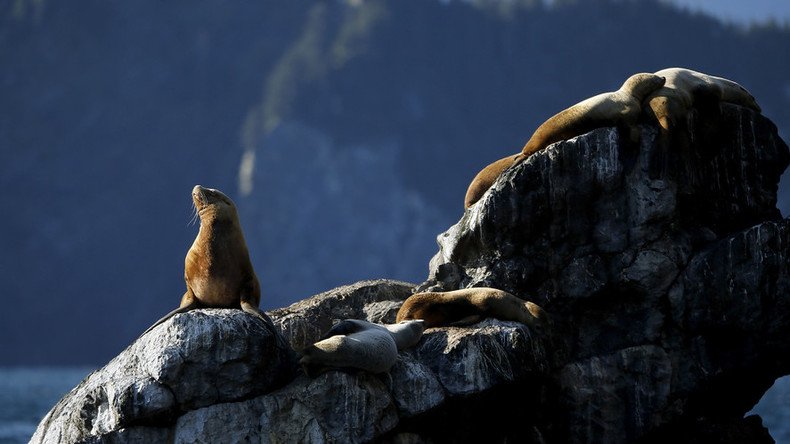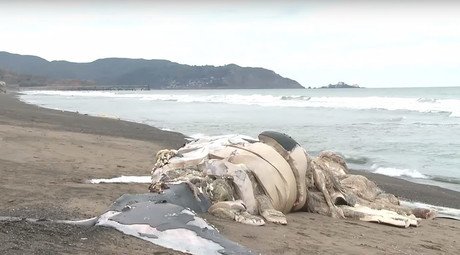Sea lions suffer from Alzheimer's-like brain damage due to algae toxins – study

Sea lions, hundreds of which are washed ashore in California annually, might be suffering from brain damage caused by a toxin in algae, a new study says. The Alzheimer's-like condition erases their memories, causing disorientation and seizures.
Naturally produced by marine algae, the domoic acid toxin accumulates in shellfish, anchovies, sardines and other small fish that make a bulk of sea lions’ diet. By eating infected animals, the mammals become exposed to high level of toxins, which leads to grave consequences: They forget how to navigate in waters and find food – and they eventually die.
“There are thousands of California sea lions with varying degrees of exposure to domoic acid out there. Sea lions navigate a complex and changing environment, and if their spatial memory is impaired, it’s bound to affect their ability to survive in the wild,” Peter Cook, researcher and lead author of the study, said in a press release.
Scientists at the University of California Santa Cruz, UC Davis and the Marine Mammal Center in Sausalito studied the brains of 30 of sea lions undergoing veterinary care and rehabilitation. To see the extent of brain lesions in the affected animals, they conducted MRIs and behavioral tests to assess spatial memory.
Sea lions suffering from the algae poisoning appeared to have a damaged hippocampus, a part of the brain involved in memory.
They showed impaired performance on both short- and long-term spatial memory tasks, such as one involving their ability to find a food reward.
"This is the first evidence of changes to brain networks in exposed sea lions, and suggests that these animals may be suffering a broad disruption of memory, not just spatial memory deficits," Cook, then a graduate student at UC Santa Cruz and now at Emory University, said.
The team compared the results of its tests across three categories: sea lions with healthy brains, those with some damage and those severely damaged by the toxin.
“It tracked to a really high degree – these animals with really high damage were just not able to hold onto spatial information at all,” Cook was cited by the Washington Post as saying. “We saw that the healthy guys learned really quickly and effectively," he added.
In 2015, the Marine Mammal Center rescued 224 California sea lions with signs of domoic acid toxicity, according to the Post.
"They end up stranding themselves in really abnormal locations, really out of their normal environments, in the middle of town, out in a field, and so on,” Shawn Johnson, director of veterinary science at the center, told the newspaper. Johnson, who was not involved in the study, said that it essentially proves “what we’ve known for quite a while from working with these sea lions.”
Toxic algae usually blooms in the spring and fall off the California coast. However, it has been getting more frequent in recent years.
"Domoic acid-producing blooms have been in the environment for a very long time, but the current pattern of much larger and more frequent blooms causing more visible damage to marine animals has been going on since the 1980s," Cook said.
Toxicity, short-term memory loss: Algae advances off US West Coast, poisoning seafood http://t.co/GoolLcHGglpic.twitter.com/z4m7eSwAY5
— RT America (@RT_America) August 6, 2015Despite not being manmade, scientists agree that human-driven climate change might be to blame for that trend.
"It's complicated, and there are lots of factors. But you can trace a lot of these things back to warming oceans," Cook told the Post.
In August, an algal bloom was also linked to the death of 30 whales off the coast of Alaska.













